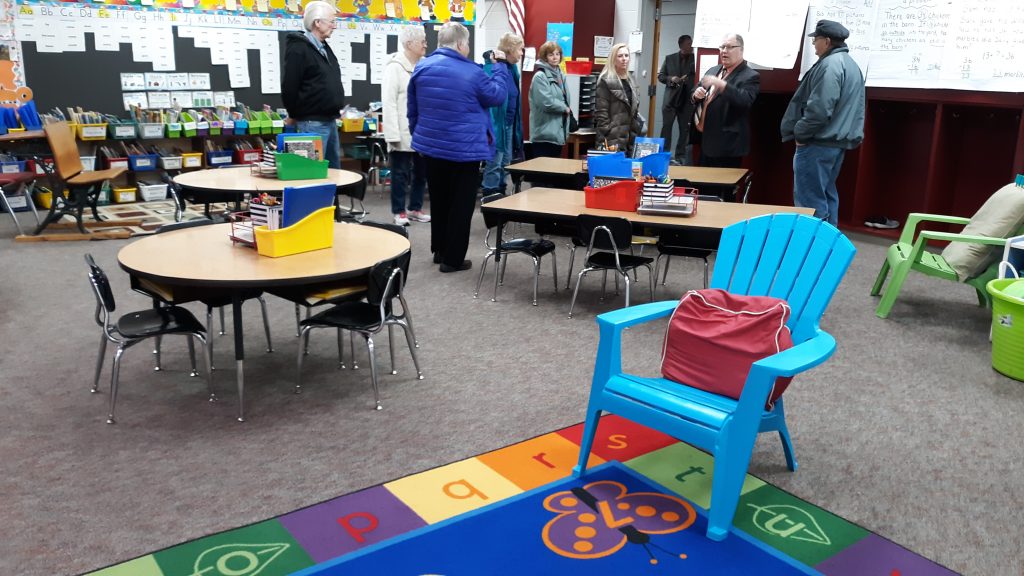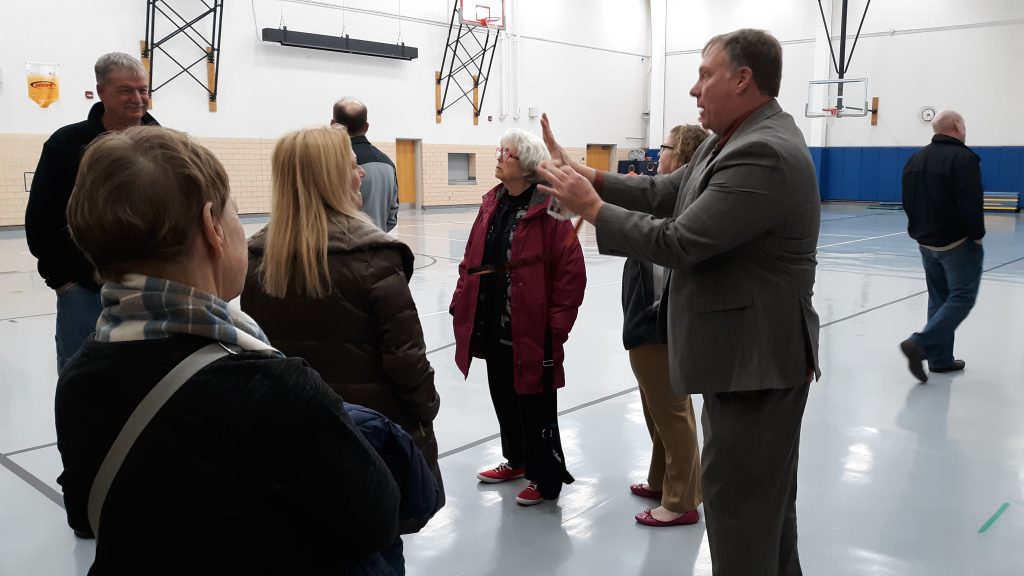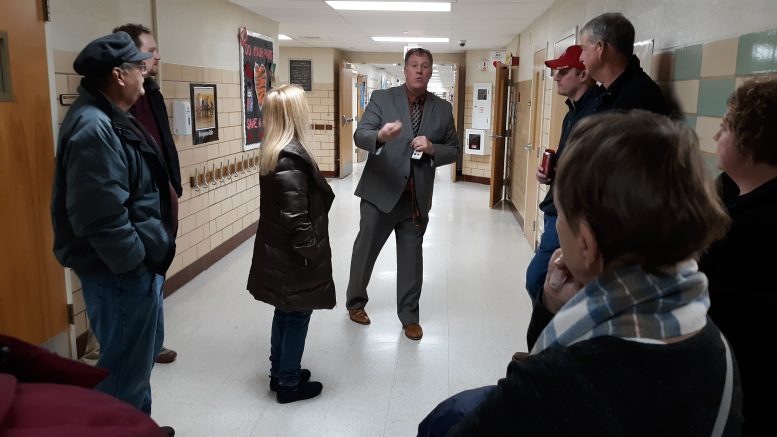By JAN LARSON McLAUGHLIN
BG Independent News
The school task force had toured Bowling Green’s old elementary buildings, and another district’s new building. In the continuing search for the best solution for Bowling Green City Schools, this week the members toured an elementary that is a combination of renovated and new construction.
The facilities task force met at Powell Elementary School – North Baltimore’s one elementary that serves the entire district of 350 preschool through sixth graders.
The school is a combination of wings being added and renovated. The oldest portion was built in 1956, followed by another section added in 1987. The entire elementary then went through a renovation and a building addition in 2001. More renovations were done in 2010.
North Baltimore Superintendent Ryan Delaney and head custodian Chris North said the building serves the district quite well. The renovated and new areas have larger than traditional classrooms, more even heat and welcome air conditioning.
In addition to being a much smaller district, there are some other differences between Bowling Green’s and North Baltimore’s situations.
North Baltimore qualified for 59 percent state funding for its building construction costs. Bowling Green currently qualifies for 17 percent state funding.
According to North, officials at North Baltimore had initially wanted to build a new elementary – but were informed by the Ohio Facilities Construction Commission that building new was not an option if the district wanted state funding.
“The problem was, the building was in too good of shape,” North said.
The same was not true for the old North Baltimore High School, which was built in 1927. A new middle school/high school was constructed in 2012.
The elementary was able to be renovated and had plenty of room for the necessary additional space.
“The main thing is, if you’re going to do a renovation, you have to have the room,” Delaney said.

Powell elementary features large classrooms, with some of them having as few as 16 students per room.
“The theory was – do it right. So they added the extra room,” Delaney said.
When planning the addition, the superintendent said the district went big.
“There’s never enough room,” he said.
So not only are the classrooms large, there are also individual rooms for school specialists. There are no teachers working with students in cramped spaces like former custodian closets.
“We probably built a few too many,” Delaney said. “So our intervention people have extra rooms.”
The renovation of the elementary required asbestos abatement. And like any project, the renovation construction revealed some surprises, North said.
“The first year was a learning curve for everybody,” he said.
But the benefits were great – with the elementary now having two overall heating systems for the building, including some self-contained units in classrooms, which have resulted in even heating throughout the building.
Air conditioning was added, which has made a big difference, according to Delaney.
“We’re quite grateful for the air conditioning,” he said.
“There’s not loss in learning” on very hot days, the superintendent said, adding he is aware of how hot it gets in Bowling Green’s school buildings.
“We feel bad for you,” Delaney said.
The combination renovated and new elementary also features other benefits, such as a huge gymnasium, updated technology, sinks and drinking fountains in each classroom, and two cafeteria lines so kids don’t spend their lunch period waiting in line.

Both Delaney and North said the school administrators and teachers had a great deal of input in the school renovation and construction. A community forum was also held to get input.
The district splurged a bit on quality furniture, with the theory that “if you do things the right way, they last longer,” Delaney said.
The facilities task force has been told that the Bowling Green elementaries built in the 1950s are structurally sound.
North cautioned that North Baltimore was given the same evaluation.
“We were told the high school was structurally one of the best buildings you’re going to find,” he said.
Being structurally sound and being functional are two different issues, he said. “Yes, you can do anything,” but it’s important to determine if a building can be fit with current upgrades.
North Baltimore is experiencing the same decline in students walking to school as is Bowling Green, Delaney said. Even in the small community, just about 10 percent of the students actually walk or ride bikes to the elementary.
North advised the task force that one of the best decisions made by North Baltimore school officials was to hire a construction manager for building projects. For the cost of about $46,000, that expert was on site everyday during construction.
“That was the best money spent,” North said.
The next meeting of the facilities task force will be Feb. 6, at 6:30 p.m., in the Bowling Green Middle School.

